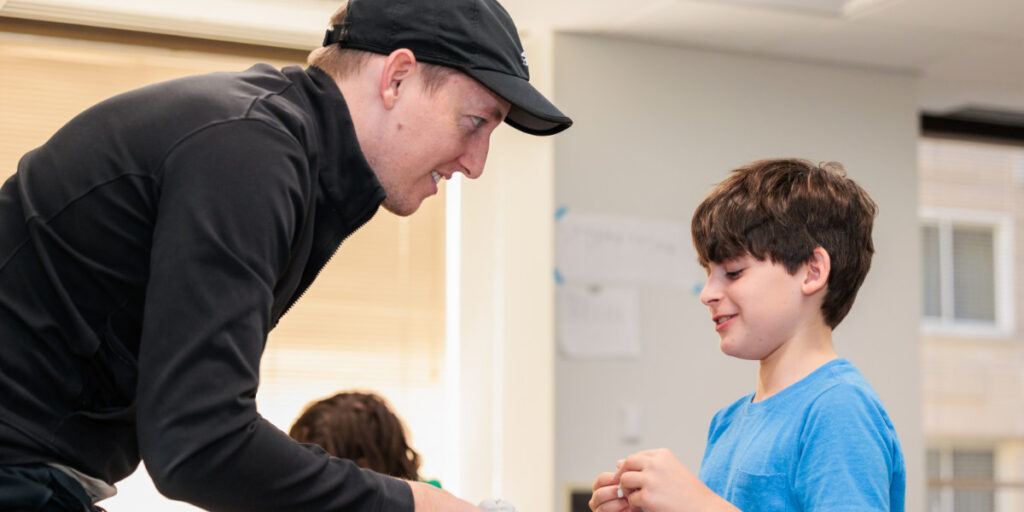Empowering Lifelong Learners: The Self-Directed Approach at The Sycamore School

The Sycamore School’s vision is to cultivate curious, independent, lifelong learners. Supporting self-directed learning is foundational to this goal.
Traditional learning often involves a teacher lecturing the class and students receiving instruction. It can feel passive with an overfocus on compliance. At TSS, we want students to actively engage in their learning, asking questions, and ultimately driving their own learning.
In middle school, this starts by helping students build self-awareness, goal-setting, and problem-solving skills. We often begin by teaching students how to be ready to learn. Ready to learn means you are present, focused, and attending to the present task. We make learning purposeful. At the beginning of a class, teachers will work with students to create a specific goal they want to achieve during that class. This helps them focus their efforts, knowing they will return to that goal at the end of class.
At TSS, students are actively engaged in the learning process. We create situations where students can dive into their work and ask questions when they need help. Teachers serve as guides to support students, and questions are encouraged.
To guide their learning, students need to understand themselves and their unique strengths and challenges. They also should understand how they learn best. Teachers ask students guiding questions rather than just providing the answers, and students learn the value of a productive struggle.Grit, perseverance, and patience are all valued. We lean into mistakes and encourage students to push beyond their comfort level to meet new challenges.
Students are given choices for how to access informational material and show what they know. For more significant projects, they often pick a high-interest topic to work on. Choosing what you study increases interest and motivation. Learning is self-paced, meaning students can move forward if they demonstrate that they understand a topic. Suppose a student is struggling with a concept. In that case, the teacher will try to present it differently or try a different modality of instruction. Self-paced learning takes the anxiety out of learning and limits downtime. Students stay engaged with the material and move forward at a pace that works best for them.
Motivation and initiative are essential elements of self-directed learning. Giving students a voice and choices increases both their motivation and initiative. However, these skills must be taught. Too often, teachers can make the mistake of assuming that a student doesn’t want to do the work when they often lack the ability or knowledge. At TSS, we remove the barriers to learning and create a setting that promotes success. We have many students who need to access assistive technology, benefit from frequent breaks, or require advanced notice of transitions. Our students learn differently, and our first goal is to create a positive relationship with each student to understand how they learn best.
When students enter high school, we expect them to understand their learning style and advocate for themselves. We start to lessen the scaffolding of tasks and give them options, such as presenting different ways to take notes or plan their assignments. The goal is for our students to start to drive their own learning. At TSS, students have multiple opportunities to engage in public speaking, connect to their larger community, and facilitate change. We want students to understand the why and apply their learned skills to real-world situations. They also develop leadership skills by being student ambassadors and teaching assistants and earning advanced credits by using their skills outside the school. We want TSS graduates to leave our school able to think critically and be purposeful about their interests and goals beyond high school. At TSS, we promote lifelong learning by focusing on the skills that build self-directed learners.
Posted in:

